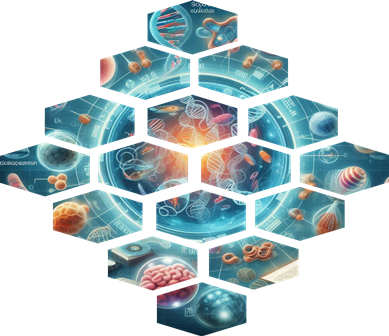Insects are often seen as pests, nuisances that bite, buzz, and disrupt our daily lives. However, these tiny creatures hold immense significance, not only in the ecosystem but also in the realm of medicine. From ancient remedies to modern pharmaceuticals, insects have played a crucial role in healing and health. This blog delves into the fascinating world of insects, highlighting their flight abilities and exploring their medicinal significance.
The Flight of Insects: A Marvel of Nature
Insects, among Earth’s most diverse and numerous creatures, are truly a marvel of nature. Their ability to fly, a characteristic shared by many, is particularly awe-inspiring. This unique trait has allowed insects to colonise virtually every habitat, from the highest mountains to the deepest forests, and to interact with other organisms in complex ways, including humans.
The mechanics of insect flight are a subject of scientific wonder. Unlike birds or bats, insect wings do not merely flap up and down. Instead, they move in a figure-eight pattern, generating lift and thrust through rapid wing beats and precise control of wing angles. This allows insects to hover, dart in multiple directions, and perform acrobatic manoeuvres that are beyond the capabilities of most other flying animals.
The significance of insect flight extends beyond their ability to move through the air. It has facilitated their roles as pollinators, predators, and prey, making them integral to the functioning of ecosystems. For example, bees and butterflies are essential pollinators, contributing to the reproduction of flowering plants and producing fruits and vegetables. Dragonflies and wasps, on the other hand, help control pest populations by preying on other insects.
But beyond these ecological roles, the flight of insects has also inspired human innovation. The study of insect flight has influenced the design of drones, aircraft, and other flying machines, demonstrating how nature’s engineering can be applied to solve modern technological challenges.
The Medicinal Significance of Insects
While insects’ flight is awe-inspiring, their medicinal significance is even more remarkable. For centuries, humans have harnessed the healing properties of insects and their products to treat various ailments. Modern science is uncovering new ways insects can contribute to medicine, leading to the development of innovative therapies and drugs.
1. Traditional Remedies and Folk Medicine
In many cultures, insects have been used in traditional medicine for thousands of years. In China, for example, silkworms have been used to treat heart disease, while ants have been used to alleviate arthritis. In Africa, termites are consumed to boost immunity; in South America, bee venom treats inflammatory conditions.
These traditional remedies are often based on the bioactive compounds found in insects. For example, silkworms produce a protein called sericin, which has antioxidant and anti-inflammatory properties. Bee venom contains melittin, a peptide with anti-cancer, anti-inflammatory, and antimicrobial effects. The use of insects in folk medicine is a testament to the deep understanding that many indigenous cultures have of their natural environment.
2. Insects in Modern Medicine
The potential of insects in modern medicine is a source of hope and optimism. In recent years, scientists have begun to explore this potential, leading to some promising discoveries that could revolutionize healthcare.
One of the most well-known examples is using maggots in wound healing. Maggot therapy, also known as maggot debridement therapy (MDT), involves the application of live, disinfected maggots to a wound. The maggots consume dead tissue, promoting the healing process and reducing the risk of infection. This therapy has been used successfully to treat chronic wounds, such as diabetic foot ulcers, that do not respond to conventional treatments.
Another example is the use of bee venom in treating rheumatoid arthritis and multiple sclerosis. Studies have shown that bee venom can reduce inflammation and modulate the immune system, relieving patients with these chronic conditions. Researchers are also investigating the potential of bee venom as a treatment for cancer, with some early studies showing promising results.
In addition to these therapies, insects are also being studied for their potential to produce antibiotics. For example, the American cockroach produces a peptide that has been found to kill bacteria, including antibiotic-resistant strains like MRSA. Similarly, the immune system of insects like the blowfly and the moth produces antimicrobial peptides that could be used to develop new antibiotics.
3. The Future of Insect-Based Medicine
The use of insects in medicine is still in its early stages, but the potential is enormous. As antibiotic resistance continues to rise, the need for new treatments is becoming increasingly urgent. Insects, with their diverse range of bioactive compounds, offer a promising source of new drugs.
One area of particular interest is the study of insect venoms. Many insect venoms contain peptides, enzymes, and other molecules that can modulate the immune system, kill cancer cells, or fight infections. For example, the venom of the bullet ant contains a peptide that has been shown to have analgesic properties, making it a potential candidate for developing new painkillers.
Another area of research is the use of insects in biotechnology. Insects can be genetically engineered to produce human proteins, such as insulin, or to manufacture vaccines. This approach, known as insect cell culture, offers a cost-effective and scalable way to produce biopharmaceuticals.
Finally, insects also have the potential to contribute to the fight against climate change. Insects are a sustainable source of protein, and their cultivation requires fewer resources than traditional livestock farming. By incorporating insects into our diet, we can reduce food production’s environmental impact while benefiting from their nutritional and medicinal properties.
Conclusion
Insects may be small, but their impact on human health is profound. From traditional remedies to modern medicine, insects have provided healing compounds and therapies. As research continues to uncover the secrets of the insect world, we can expect to see even more innovative uses for these remarkable creatures in the future. Whether through their flight, venom, or ability to produce life-saving drugs, insects are an invaluable resource for better health and well-being.
AIPH University, located in Bhubaneswar, Odisha, is a prominent University specializing in Public Health, Biological Sciences education, and research. The university offers a wide range of undergraduate, postgraduate, and doctoral programs across various domains of public health, Biological Sciences, and Allied Health Sciences. For contact details, you can reach out to the university at +91-7205074656 or +91-9938213237, or via email at admissions@aiph.ac.in for admission queries and info@aiph.ac.in for other inquiries.






